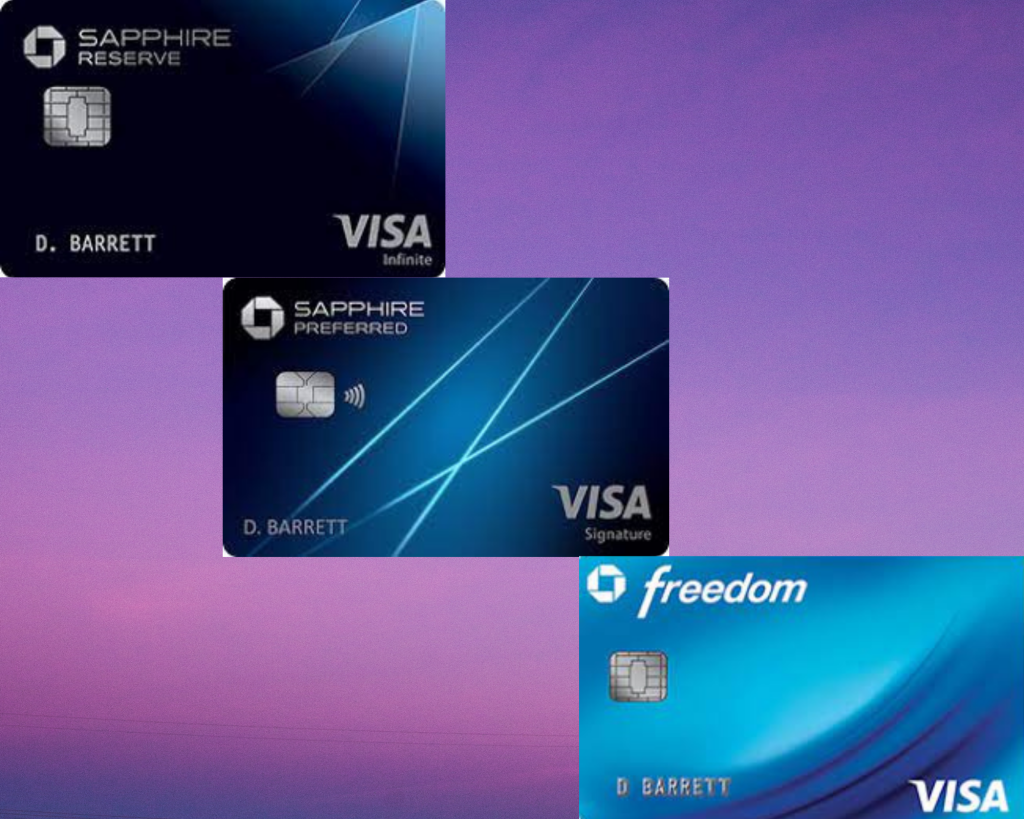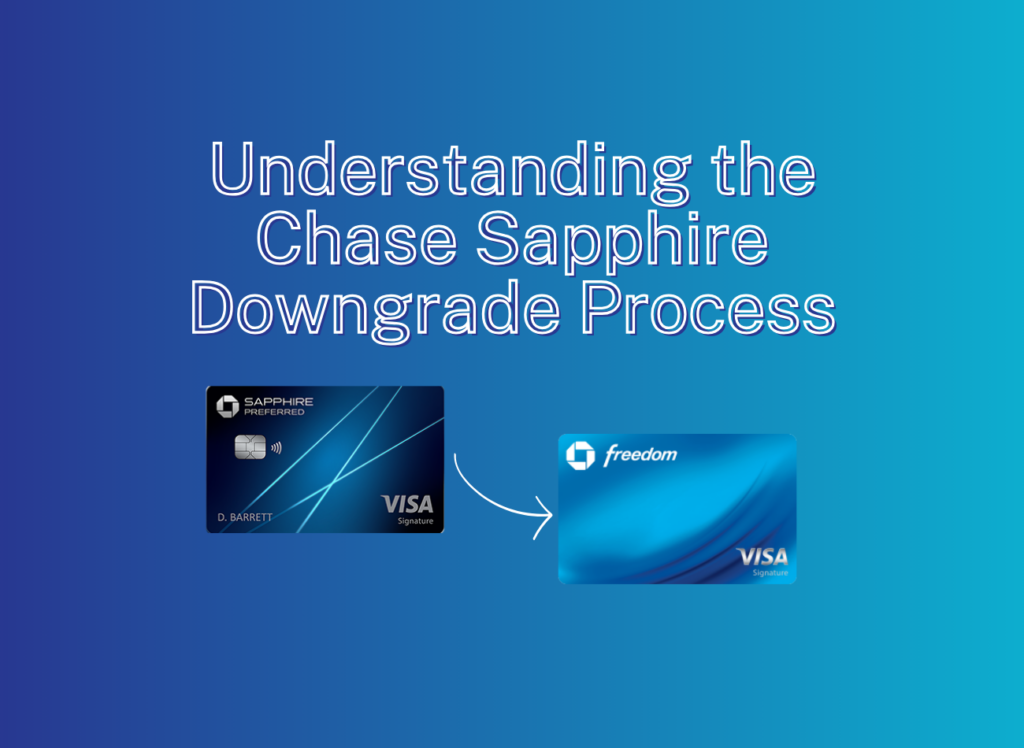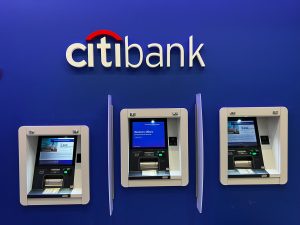Chase Sapphire Downgrade Process
One of the most frequently asked questions in the Travel on Point(s) Facebook group is how to downgrade a Sapphire product. The Chase Sapphire Preferred or the Chase Sapphire Reserve are the two main Sapphire products. If you're just starting to travel on points, one of these two cards is the card to start with. But after the first year, it might make sense to downgrade that card as part of your broader credit card strategy. Whether you have a CSP or CSR, the Chase Sapphire downgrade process is pretty simple.
Table of Contents
ToggleWhat is a Downgrade?
Downgrading a credit card (also known as product changing) means changing the credit card product to a different card product with the same bank. You still keep that same account open, with the same card issuing bank, and the same credit limit on your card. With many banks, including Chase, your credit card number can stay the same. Downgrading a card also has no effect on your credit score or credit history. This is because your account remains unchanged. As far as the bank and the credit bureaus are concerned, it's like you still have the same original card.
Why Downgrade a Sapphire Card
There are two main reasons you would want to downgrade. First is if you want to avoid paying an annual fee after the first year. If you have two cards in your household and your first year is up, you may want to downgrade to avoid paying two annual fees on the same card. Additionally, you can combine Ultimate Rewards in the same household, so you only need one person to have a CSP or CSR (or a Chase Ink Business Preferred) in your household to transfer URs to Chase's valuable transfer partners.
Secondly, if you last received your CSP or CSR sign-up bonus at least 48 months ago, you are eligible for a new sign-up bonus. This means that if you downgrade your CSP or CSR, you can apply for a new CSP or CSR and earn a new sign-up bonus. Of course, as with other Chase cards, you need to be under 5/24 to reapply for a CSP or CSR.

What Card to Downgrade to
Generally, we recommend downgrading to the original Chase Freedom card. This card does not have an annual fee and earns 5x URs via the rotating quarterly bonus categories just like the Chase Freedom Flex. The Chase Freedom is no longer available to new applicants, so product changing is the only way to get this card now.
The main reason we recommend downgrading to the original Chase Freedom card is that doing so keeps you eligible to earn the sign-up bonus for the other Chase Freedom cards (namely, the Chase Freedom Unlimited and Chase Freedom Flex). You can only earn a SUB for the Freedom Unlimited or Freedom Flex if you do not have the card and have not earned a SUB for that card in the last 24 months. Therefore, if you have already earned a sign-up bonus for either the CFU or the CFF, you could downgrade to the one for which you've already earned the SUB.
You can never have enough Freedom/Freedom Flex cards, since they can each earn 30,000 URs per year if you maximize the quarterly spending categories. That's why the Freedom Flex (or the original Freedom) is an important part of the Chase Trifecta.
The Chase Sapphire Downgrade Process
Downgrading from a CSP or CSR is quite simple. You can just call the number on the back of your CSP or CSR. Some Chase representatives might be confused by the request to product change to an original Freedom card. This is likely because the original Freedom has not been available for new applications for a couple of years now.
It is usually helpful to specify that you want to product change to the “Freedom Visa that earns Ultimate Rewards.” This usually helps the representative understand that you are looking for the original Freedom instead of the Freedom Flex, which is a MasterCard.
If the Chase representative cannot or will not downgrade your card, simply hang up and call again (HUCA) until you reach a representative who knows how to help.
Earning a Sapphire SUB Again
Once you have downgraded your CSP or CSR, you can be eligible to apply for that card again. To be eligible for a CSP or CSR sign-up bonus, you may not hold either card, and you may not have earned a sign-up bonus for either card in the last 48 months. Keep in mind the 48-month clock only starts running once you actually received the sign-up bonus, not when you opened the card originally. You can verify this by checking your old statements. We recommend using a spreadsheet to track cards and sign-up bonus dates. And Credit Karma can help you track these down to put in a spreadsheet.
Once you've done the math and concluded you are eligible for a new CSP or CSR SUB, we recommend waiting to apply until two weeks from downgrade or your statement closing date, whichever occurs first. This should allow your downgraded card to update in the Chase system. Otherwise, Chase's system might think you still hold a Sapphire product and will deny you automatically for a new CSP or CSR.
As with other Chase cards, you of course have to be under 5/24 to open a new CSP or CSR. If for any reason you initially get declined or pending review, it may have not been long enough. You can check the flowchart for the application process should you have any issues. If you end up getting declined, you can do a reconsideration call and have up to 30 days to complete this.
Chase Sapphire Downgrade Process: ToP Thoughts
Maximizing sign-up bonuses again is a great way to earn more points. Although the downgrade process itself is quite simple, it's important to keep track of all the relevant dates to make sure you're actually eligible for a new Sapphire SUB.
Have you ever downgraded a CSP or CSR? Come over to our Facebook group and let us know your thoughts.








